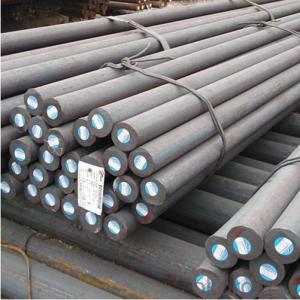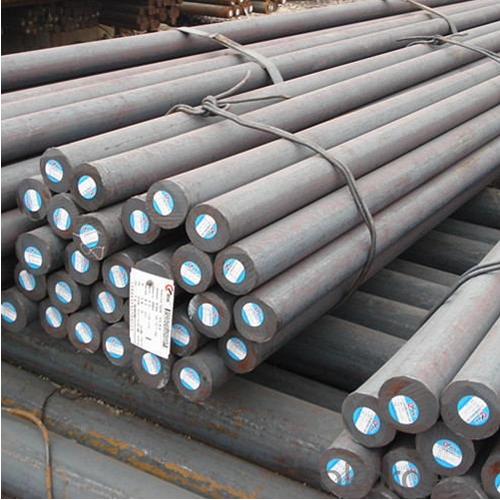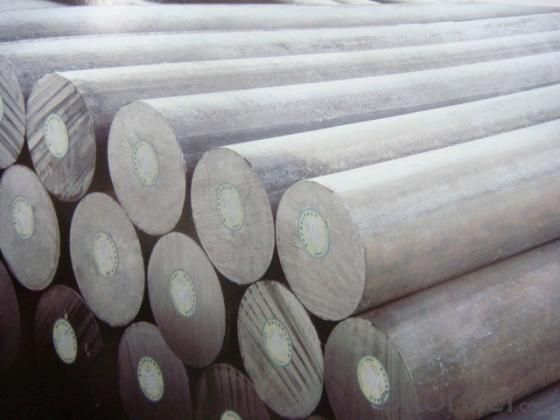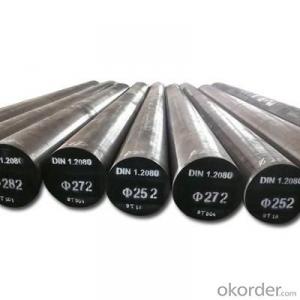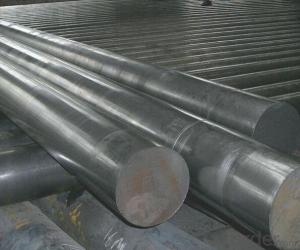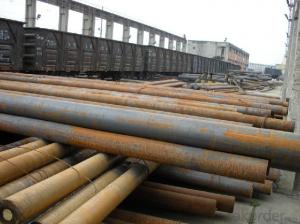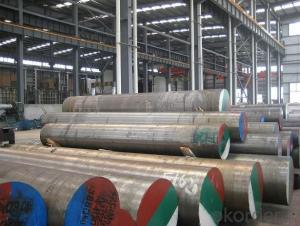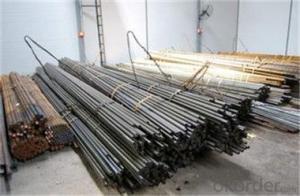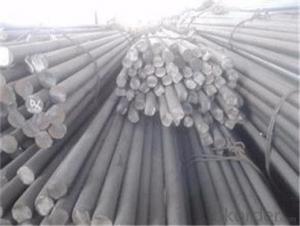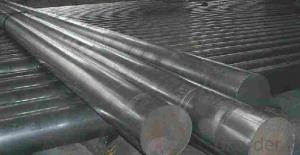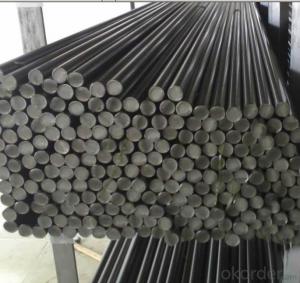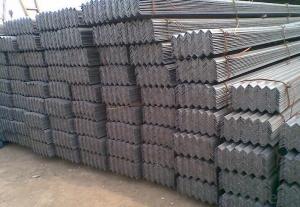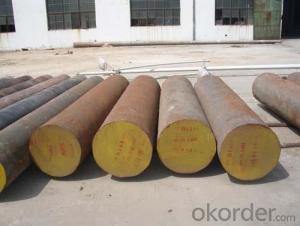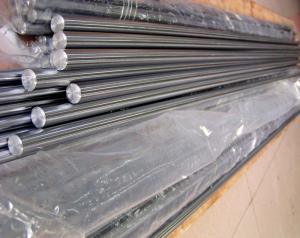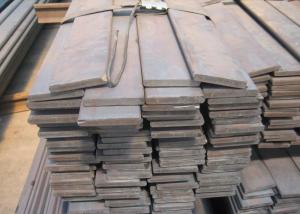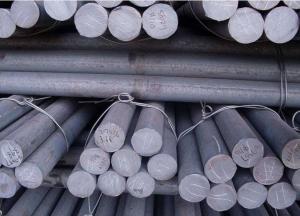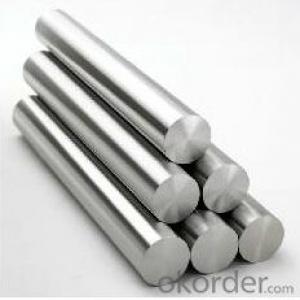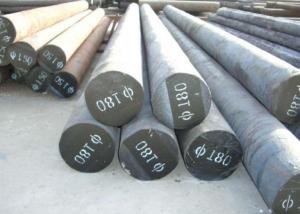C22 Carbon Steel Bar from CNBM 16mm-300mm
- Loading Port:
- Tianjin
- Payment Terms:
- TT OR LC
- Min Order Qty:
- 25 m.t.
- Supply Capability:
- 50000 m.t./month
OKorder Service Pledge
OKorder Financial Service
You Might Also Like
Specification
C22 Carbon Steel Bar from CNBM 16mm-300mm
Product descripition:
1: Dia: 100-1200mm;
2: Length: 3000-12000mm
3: Delivery condition:Hot forged, black surface/Peeled/Turned.
4: Delivery date: 30-45 days.
5: MOQ: 20tons.
6: Payment term: 30% in advance, 70% before shipment.
7: UT test standard: Sep 1921-84 c/c.
8: Application: Statically and dynamically stressed components for vehicles, engines and machines, for parts of larger cross-section, crankshaft and gears.
Chemical Composition:
| Grate | C | Si ≤ | Mn | P ≤ | S ≤ | Cr ≤ | Mo ≤ | Ni ≤ |
| C22 | 0.17-0.24 | 0.40 | 0.40-0.70 | 0.045 | 0.045 | 0.4 | 0.1 | 0.4 |
Advantage:
1.More than 20 years experience in special steel
2.Professional manufacturer and trading combination
3.Most products are in stock, and MOQ is 1 metric ton
4.Reliable quality & competitive price & excellente service
5.Inquiry will be replied in 24 hours
Application:
High-quality carbon structural steel/S20C/ 1020/ 20 S20C structural carbon steel bar /1020 /20 can be used to be manufactured medium or small carburization or nitrocarburizing parts and press forging parts, such as lever shaft, selector fork of speed changing box, gear, heavy mechanical lever and shackle, etc.
Product Show:
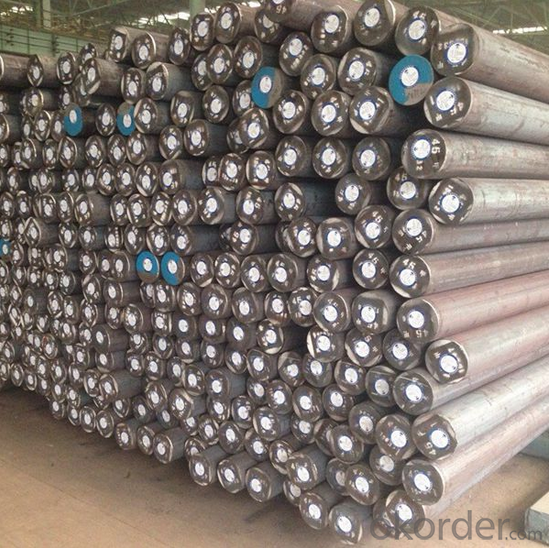
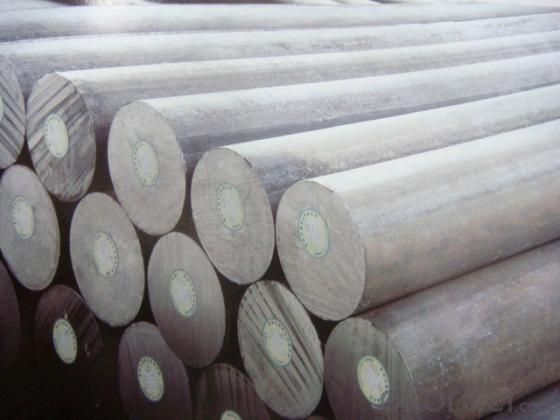

- Q: What are the specific requirements for special steel used in the oil and gas sector?
- The primary focus of special steel requirements in the oil and gas sector lies in its ability to withstand harsh and demanding environments. Several key requirements include: 1. Corrosion Resistance: To ensure equipment longevity and reliability in corrosive environments caused by factors like moisture, chemicals, and high temperatures, special steel must exhibit excellent corrosion resistance. 2. High Strength: Special steel must possess high strength and toughness to endure extreme pressure, stress, and load conditions in oil and gas operations. This is crucial for maintaining the structural integrity of pipelines, offshore platforms, and drilling components. 3. Low Temperature Resistance: For oil and gas operations in extremely cold conditions, such as deep-sea exploration or Arctic regions, special steel must exhibit good low-temperature toughness to prevent brittle fracture and maintain mechanical properties. 4. Weldability: To facilitate ease of fabrication and construction, special steel should have good weldability in the oil and gas sector. This is vital for joining various components and pipelines, ensuring structural integrity and minimizing failure risk. 5. Hydrogen-Induced Cracking (HIC) Resistance: Special steel must resist hydrogen-induced cracking, which can occur in the presence of hydrogen sulfide gas commonly found in oil and gas environments. HIC can lead to catastrophic failures, making it essential for the steel to be designed to prevent this phenomenon. 6. Sour Service Resistance: In certain oil and gas fields, where corrosive gases like hydrogen sulfide are present, special steel must withstand sour service conditions. This requires high resistance to sulfide stress cracking and good mechanical properties under harsh conditions. 7. Compliance with Industry Standards: Special steel used in the oil and gas sector must meet industry-specific standards and specifications, such as those set by the American Petroleum Institute (API). This ensures quality, reliability, and safety. Overall, the requirements for special steel in the oil and gas sector aim to achieve durability, reliability, and safety in challenging operating environments. While specific applications may have varying requirements, these criteria are crucial for the smooth and efficient functioning of oil and gas operations.
- Q: Can special steel be used in the pharmaceutical manufacturing equipment manufacturing industry?
- Yes, special steel can be used in the pharmaceutical manufacturing equipment manufacturing industry. Special steel offers several advantages such as resistance to corrosion, high strength, and durability, making it suitable for various applications in pharmaceutical manufacturing equipment. It ensures the hygienic and safe production of pharmaceutical products, meeting the industry's specific requirements and regulations. Additionally, special steel's ability to withstand extreme temperatures and harsh chemicals makes it a valuable material for manufacturing equipment used in pharmaceutical processes.
- Q: How is wear-resistant steel used in mining and earthmoving equipment?
- Wear-resistant steel is extensively used in mining and earthmoving equipment due to its exceptional properties that enable it to withstand harsh conditions. It is used to manufacture various components, such as buckets, blades, crushers, and drilling equipment, which are subjected to intense abrasion and impact. The wear-resistant steel's hardness, durability, and resistance to wear and tear make it ideal for protecting these equipment parts from excessive damage and extending their lifespan.
- Q: How does nitriding improve the wear resistance of special steel?
- Nitriding is a surface hardening process that significantly improves the wear resistance of special steel. The process involves the diffusion of nitrogen atoms into the steel's surface, forming a hardened layer called nitride. This nitride layer is exceptionally hard and has a high resistance to wear, making the steel more durable and able to withstand abrasive forces and friction. The improved wear resistance of nitrided special steel is primarily due to the formation of a compound called iron nitride (Fe3N) within the nitride layer. Iron nitride has a high hardness level, typically ranging from 800 to 1000 HV (Vickers hardness). This hardness is significantly higher than the hardness of the steel's base material, contributing to the enhanced wear resistance. Additionally, the nitride layer formed during the nitriding process also increases the surface hardness of the steel. This increased hardness makes the steel more resistant to deformation and indentation, which are common causes of wear in materials subjected to friction and abrasion. Furthermore, the nitride layer acts as a barrier, protecting the underlying steel from chemical reactions, oxidation, and corrosion. This barrier prevents the steel from degrading due to exposure to harsh environments, moisture, and chemicals, thus further enhancing its wear resistance. Overall, nitriding improves the wear resistance of special steel by creating a hardened nitride layer that is exceptionally hard, resistant to wear, and acts as a protective barrier. This process significantly extends the lifespan and durability of the steel, making it ideal for applications that require high wear resistance, such as cutting tools, gears, and automotive components.
- Q: What are the properties of magnesium alloys?
- Magnesium alloys exhibit a combination of desirable properties, including low density, high strength-to-weight ratio, good corrosion resistance, excellent machinability, and high thermal conductivity. They also possess good damping capacity, making them suitable for applications requiring vibration reduction. Additionally, magnesium alloys can be easily cast, forged, and welded, allowing for a wide range of manufacturing processes. However, they are prone to ignite under certain conditions and can be more expensive compared to other metals.
- Q: What are the main characteristics of creep-resistant steel?
- Creep-resistant steel possesses high strength and resistance to deformation at elevated temperatures. It maintains its mechanical properties even under long-term exposure to high stress and high temperatures. Its ability to resist creep, or the gradual deformation under stress, makes it suitable for applications in power plants, boilers, and other high-temperature environments. Additionally, creep-resistant steel exhibits good resistance to corrosion and oxidation, ensuring its durability and longevity in harsh conditions.
- Q: Can special steel be used in the production of surgical implants?
- Yes, special steel can be used in the production of surgical implants. Special steel, such as stainless steel, is often preferred for surgical implants due to its high strength, corrosion resistance, and biocompatibility. It is commonly used for various types of implants, including orthopedic, dental, and cardiovascular implants.
- Q: Can special steel be used in the manufacturing industry?
- Yes, special steel can be commonly used in the manufacturing industry due to its unique properties and characteristics. Special steel alloys are often preferred for their high strength, durability, and resistance to corrosion, heat, and wear. These properties make special steel suitable for various applications in manufacturing, such as in the production of machinery, tools, automotive parts, aerospace components, and construction materials.
- Q: What are the properties of electrical steel?
- Electrical steel, also known as silicon steel, possesses specific properties that make it ideal for use in electrical equipment. It exhibits low core loss, high permeability, and high magnetic saturation, enabling efficient energy conversion and minimizing power losses. Additionally, electrical steel has a high resistivity, reducing eddy currents and further improving its performance in transformers, motors, and generators.
- Q: What are the different methods for tempering special steel?
- There are different methods available for tempering special steel, each having its own advantages and considerations. Some commonly used methods for tempering special steel are: 1. Air Tempering: Special steel is heated to a specific temperature and allowed to cool in still air. This method is suitable for low alloy steels and results in uniform hardness throughout the steel. 2. Oil Tempering: Special steel is heated to a specific temperature and then rapidly cooled by quenching it in oil. This method is commonly used for tool steels as it provides a good balance between hardness and toughness. 3. Water Tempering: Similar to oil tempering, this method involves quenching the steel in water after heating it to a specific temperature. It leads to a harder steel due to faster cooling, but it may also increase brittleness. 4. Salt Bath Tempering: The steel is immersed in a molten salt bath at a specific temperature. This method ensures controlled and uniform heat transfer, resulting in consistent hardness throughout the steel. 5. Cryogenic Tempering: Steel is cooled to extremely low temperatures, often below -100°C (-148°F), using liquid nitrogen or helium. This method further reduces residual stresses and enhances wear resistance of the steel. It is important to consider various factors such as the type of steel, desired hardness, intended application, and the required balance between hardness and toughness when choosing a specific tempering method for special steel. Following proper heat treatment guidelines and seeking advice from experts is crucial to achieve optimal results for a particular steel alloy.
Send your message to us
C22 Carbon Steel Bar from CNBM 16mm-300mm
- Loading Port:
- Tianjin
- Payment Terms:
- TT OR LC
- Min Order Qty:
- 25 m.t.
- Supply Capability:
- 50000 m.t./month
OKorder Service Pledge
OKorder Financial Service
Similar products
Hot products
Hot Searches
Related keywords
